I guess you are here because you are determined to keep your cat healthy and give them the best care possible. That’s exactly what we intend to achieve for you with this article. We have covered 10 essentials every cat parent should follow to keep your cat healthy, as suggested by a veterinary stalwart, Dr. Dharmraj Raibole.
Table of Contents
Cat Care Essentials
As responsible cat parents, we were looking for the best cat care advice from experts in the field to avoid confusion and misinformation. That’s how we ended up interviewing Dr. Raibole and learned some life-saving tips that have boosted our confidence to provide better cat care.
Ensure First Consultation
At Top Cat Guide, we will always be the supporters of #adoptdontshop. However, if for reason you have purchased a cat from a breeder, ensure that you don’t rely on the breeders for healthcare information. While breeders may have a wealth of knowledge about different cat breeds, its always best to seek knowledge and advice from a licensed veterinarian. Thus, when you purchase a cat from a breeder, visit a veterinarian for first consultation as soon as possible. The vet will rule out health concerns and suggest a proper plan for ensuring good feeding, water, and stress management.
Manage Food, Water, Stress
Feeding Management
What to Feed: As cats are obligate carnivores, they must consume meat in order to survive. Building and maintaining healthy muscles, organs, and tissues depend on this protein. Cats hunt and devour prey animals in the wild, which gives them the essential protein and other nutrition they require. However, compared to their wild counterparts, domestic cats require a different diet. While feeding your cat homemade food is an option, making sure your cat is getting all the nutrients she needs can be challenging.
As a result, it is advised to purchase high-quality and nutrition-filled cat or kitten food based on your cat’s age. Before buying any pet food – kibble (dry food), semi-moist, or wet food, read the cat food label and cross-check if it has any toxic ingredients for cats. Invest time in learning about the rules set by AAFCO for pet food manufacturers to follow when labeling products. Knowing how to read cat food labels will help you make informed decisions regarding the food you buy for your cats. Read this article for complete guidance on what to feed cats and how to read labels.
Dr. Raibole specified that humans need to understand that not all human food are suitable for cats. For example, chocolates, pastries, and sometimes grapes are toxic to cats. Feeding them human foods that’s poisonous to them might lead to health issues like vomiting, diarrhea, loss of appetite, breathing difficulty, wheezing, excessive thirst, frequent urination, unsteady gait, dilated pupils, fever, and drooling. Here are 10 human foods that are extremely toxic to cats. Avoid them at all costs.
How Much and How Often to Feed: Here is a basic guideline:
- Newborn kittens should be fed every 2-3 hours at least for the first week after birth.
- KMR (Kitten Milk Replacer) can be used for newborn kittens if a lactating mother is not available for feeding.
- Kittens who are 4-6 weeks old can be transitioned from mother’s milk or KMR to solid food.
- ½-1 cup of dry kitten food or 6-9 ounces of wet food should be consumed daily by kittens.
- 1-7-year-old healthy cats need 15 to 20 grams of dry food and 1/2 or 1 can of wet food per day per kilogram of body weight
- Senior cats need fewer calories but appropriate amounts of vitamins and nutrients.
- Free-feeding cats should be avoided as it is an invitation to fatal diseases.
- Feeding a kitten up to three times daily is ideal, but when the cat turns one, feeding them twice daily is fine.
Water Management
60-70% of a cat’s body weight is water. Thus, water is extremely vital to a cat’s survival. A healthy 5 kg (11-pound) cat drinks around 250-270 milliliters of water daily under typical conditions. Your cat gets only 8 ml of water from dry food (kibble). Thus, canned food and direct water consumption are essential for cats.
If you are unsure about your cats’ daily water consumption, monitor their water intake for a few days. If you think your cat is not drinking enough water and also see signs of dehydration, take your cat to a veterinarian immediately to rule out possible underlying health conditions.
Do you think your cats are not drinking enough water. Here are some effective, tried and tested tips to encourage your cats to increase their water intake.
Stress Management
Cats can get stressed over things you cannot even think of like lack of toys, you petting another cat, you ignoring her meows, getting cornered during their litter box time, seeing something that they feel is strange in the house, another male cat dominance, or even a loud noise like the sound of a grinder.
Thus, its best to observe your cat’s reactions to certain things at home and accordingly take actions to rule out the root cause of stress. Stress is also a major cause of many health and behavioral concerns in cats like litter box problems. If you think your cat is facing similar issues of pooping outside the litter box, read this information on preventing litter box problems and make changes accordingly to see what suits your cat’s needs.
In a multi-cat household, ensure every cat has a dedicated area to retire to when they crave a little solitude. This could be a separate space with a cat tree, or a comfortable bed. Make sure there are many resources available, including feeding containers, litter boxes, and toys, to discourage competition and alleviate tension. Ensure every cat receives personal attention as well as playtime with you so that they do not feel ignored or excluded. You can also employ soothing diffusers or pheromone sprays to assist create a more peaceful atmosphere.
Vaccinate on time to keep your cat healthy
Cat vaccinations have been clinically and scientifically verified to safeguard against the onset and spread of painful and lethal feline diseases. Dr Raibole suggests the following mandatory vaccinations, but ensure doing this only after you consult your vet.
Rabies vaccine
The rabies vaccine is essential for your cat’s defence against this fatal disease and is mandated by law in the majority of places. Your cat might need to obtain a rabies vaccination every year or every three years, depending on where you reside.
Tricat vaccine
Nobivac® Tricat Trio: This 3-in-1 vaccination is administered for active immunization of cats to reduce clinical signs caused by an infection with feline panleucopaenia virus (MW-1), feline herpesvirus type 1 (rhinotracheitis), and feline calicivirus.
Its given in 3 parts –
- 1st vaccine on the 45th day
- 1st booster after 21 days
- 2nd booster after 21 days
After the first two booster doses, there is a yearly vaccine.
Feline Leukemia vaccine
Immunization against the feline leukemia virus, which can lead to anemia, immune system suppression, and malignancy, is known as the feline leukemia vaccination. Depending on your cat’s lifestyle and risk factors, this vaccine may be suggested annually or every three years for kittens and cats who go outside.
FIV vaccine
Feline immunodeficiency syndrome (FIS) is a dangerous condition that can impair your cat’s immune system and make them more susceptible to other infections. The Feline Immunodeficiency Vaccine (FIV) helps protect against the virus that causes FIS. Consult your veterinarian to find out if your cat needs this vaccine because it is not always advised and may not be effective in all cats.
Following your veterinarian’s advised immunization schedule and keeping your cat up to date on all required vaccinations are crucial. This makes it possible for your cat to have a long and healthy life while also being protected from a number of diseases. Additionally, don’t be afraid to speak with your veterinarian if you have any questions about the effectiveness or safety of vaccines.
Dr. Raibole emphasized the importance of not missing on any shot. In his experience, cat parents visit the clinic to administer the first vaccine and then forget about it. It leads to adverse effects in cats as their immunity get compromised.
Consult with your veterinarian to first check if your has the immunity and basic health to handle these vaccinations. Let me share a personal experience here. In our early days of rescuing cats, we rescued a stray kitten with the hope to give it the best care and love possible. To get started with health-related needs of the kitten, we contacted a veterinarian and requested home visit.
I suppose the ones who visited our home were trainees because they did not tell us about the importance of deworming before vaccination. The vaccination was done and the kitten who was dealing with worms and low immunity couldn’t handle it eventually giving up. This incident was a lesson for life and it shed light on how important it is to seek good veterinary advice along with having proper knowledge on cat care. That brings us to the next point on deworming.
Deworm
Deworming is an essential part of cat wellness since parasites in the intestines can cause a variety of health problems in cats. Hookworms, tapeworms, roundworms, and various other parasites may spread to cats by coming into contact with contaminated soil or feces, or through eating infected prey.
When these parasites go untreated, they can cause loss of weight, throwing up, and other digestive disorders, as well as anemia, fatigue, and various other systemic problems. These parasites can potentially kill you in severe circumstances. Deworming drugs work by destroying worms in a cat’s gut, thereby enabling the cat to expel them.
Regular deworming can help keep your cat healthy and happy by preventing the spread of parasites. Based on your cat’s specific needs and lifestyle, your veterinarian might recommend a deworming schedule.
An important step to keep your cat healthy is deworming, which helps shield them against a variety of parasitic worms that can result in major health issues. More details about deworming are provided below:
When to deworm
Deworming is advised for kittens at 2, 4, 6, and 8 weeks old, as well as once a month until they are 6 months old. Adult cats should then get deworming treatments every three months or as your veterinarian directs based on their lifestyle and risk factors. Cats that are outside or engage in hunting or scavenging may require more frequent deworming.
Dr. Raibole recommends deworming a cat every month unto 6 months and then every 3 months for lifetime.
Types of dewomers
Different kinds of dewormers are available, including injectables, topical medicines, and oral pills. Based on your cat’s age, weight, and health, your veterinarian can assist you in making the best decision.
Symptoms of worm infestation
Watch for symptoms of a worm infestation in your cat, such as vomiting, diarrhea, an enlarged tummy, lethargy, and an unhealthy coat condition. Lungworms, for example, can cause respiratory issues including coughing and wheezing.
Prevention
You can take other measures in addition to deworming your cat to aid in avoiding a worm infestation. These include limiting your cat’s exposure to the feces of other animals, keeping your cat indoors, and washing your hands thoroughly after handling or cleaning your cat’s litter box.
Neuter/ Spay
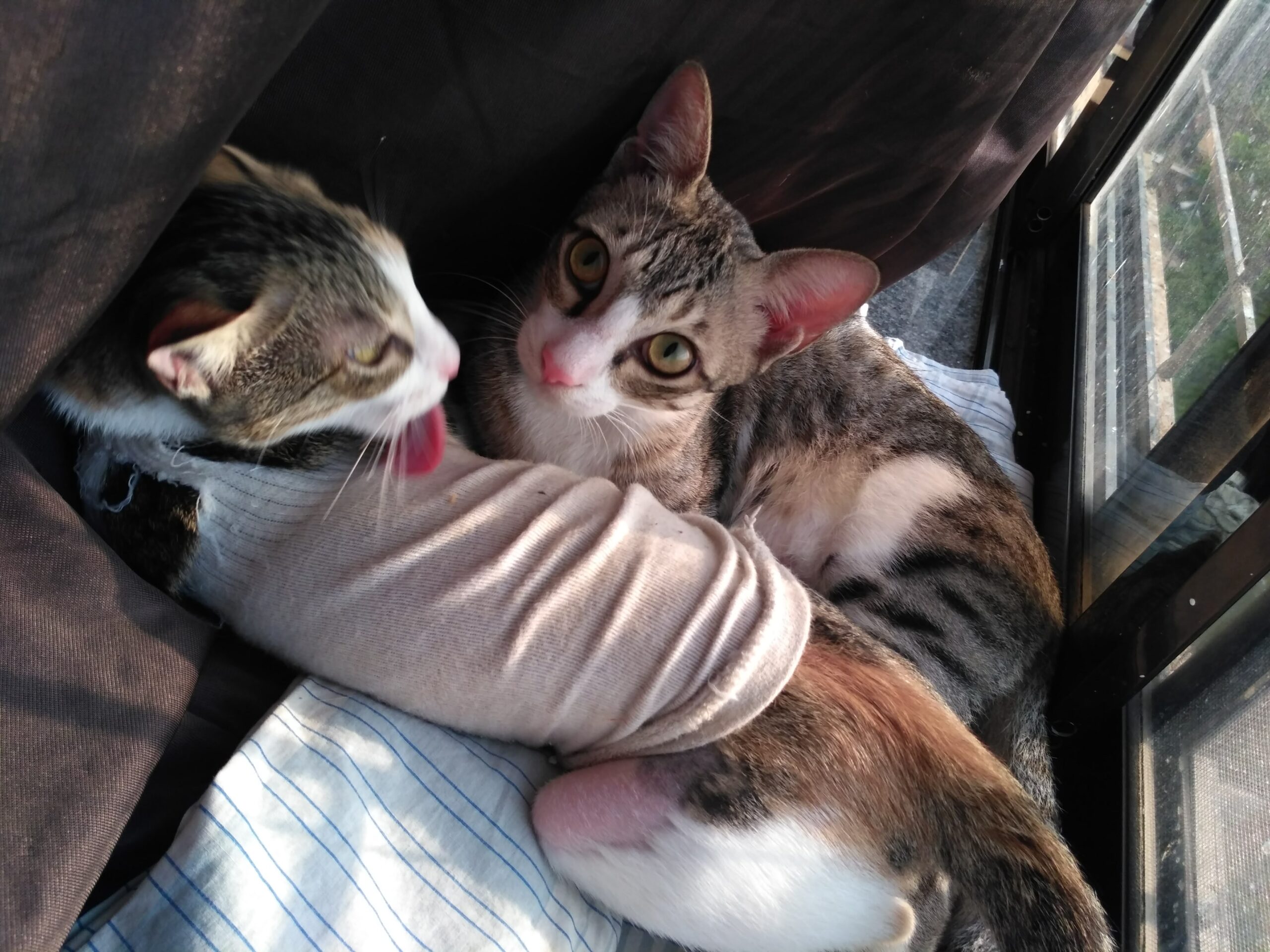
The goal of neutering is to stop an animal from reproducing by surgically removing its reproductive organs. Neutering is frequently performed on both male and female cats, and it has a variety of advantages.
The uterus and ovaries are taken out during the neutering process for female cats. This is usually carried out when the cat is between 6 and 8 months old, at the point of sexual development. Female cats who have been neutered are less likely to have unintended litters, develop certain cancers, or experience potentially fatal uterine infections known as pyometra.
Both male and female cats who have been spayed or neutered can benefit behaviorally. The danger of injury and the spread of illness can be decreased by neutering cats, which are less likely to engage in certain behaviors like spraying, marking territory, and fighting with other cats.
It’s important to remember that, as with any surgical operation, neutering carries some possible dangers and adverse consequences. These can be discussed with your vet, who can also assist you in determining whether neutering is the best course of action for your cat. They can also provide you with advice on when the treatment should be done based on your cat’s age, health, and other considerations.
Manage male cats dominance
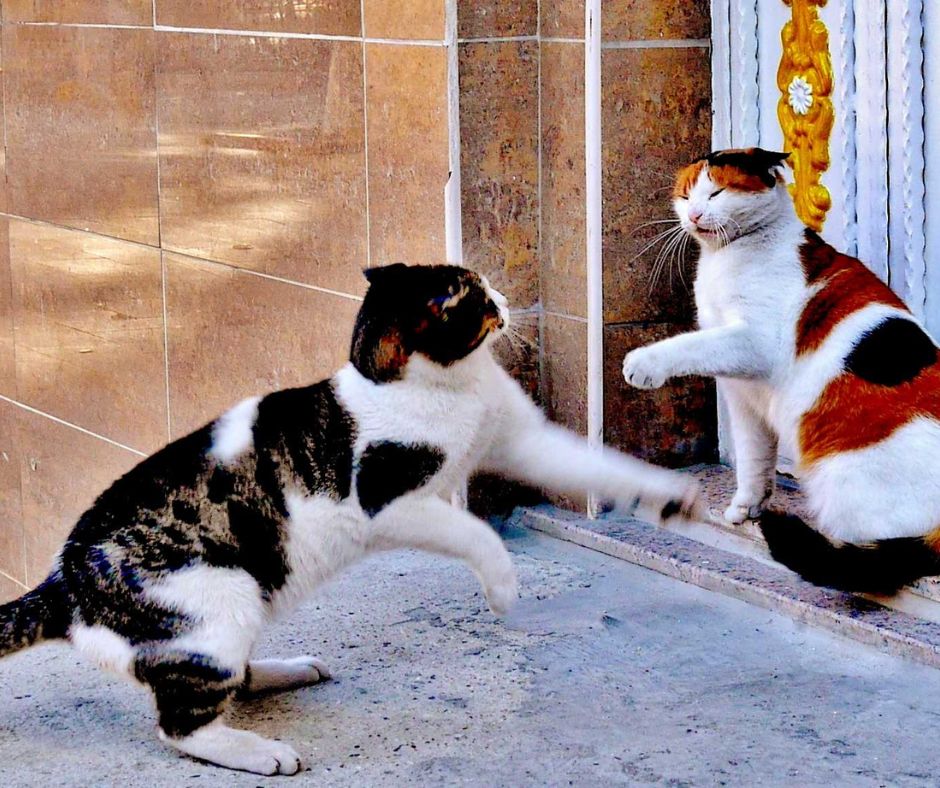
Male cats are territorial by nature, and they may turn hostile against other male cats in the same home. This behavior is more common in intact (sexually active) male cats, but spayed males can exhibit it as well.
When a pair of male cats dwell in the same house, they may fight or exhibit aggressive behavior, resulting in wounds and anxiety for the two cats. In some circumstances, one cat might grow increasingly dominant and mistreat the other, causing the subordinate cat to experience persistent worry and anxiety.
It’s crucial to realize that some male cats might get along just fine. So, it’s not a hard and fast rule to keep only one male cat, but its important to observe their behavior to check if the presence of male cats is creating a stressful environment. Consult a vet or a cat behaviorist to make a decision.
Provide an enriched environment

As mentioned above, cats can get stressed due to multiple reasons. Thus, a cat parent should always be observant and considerate towards their cat’s needs at home. In a multi-cat household, keep toys, litter boxes, food bowls, water bowls dedicated to every cat. In case of litter boxes, add one more, just to ensure they do not get stressed if any of the litter boxes are occupied. Here are some more areas to take of for providing a good environment.
Ensure Regular Exercise: Being naturally energetic and active, cats require frequent exercise for both their physical and mental health.
Playtime: Playing with your cat is a terrific way to keep them mentally and physically active. To get your cat active and jumping, use toys like wand toys, balls, and laser pointers. Interactive playtime with your cat can help you two become closer while also giving them the exercise they require.
Scratching posts and cat trees: Scratching posts and cat trees give your cat a place to climb, scratch, and play. Additionally, they provide your cat with a place to rest and take in their surroundings, which can be psychologically interesting.
Outdoor activities: You can take your cat for a walk outside if it has been trained to use a leash. For your cat to explore and play in, you may also build an outside enclosure or patio.
Window nets/ Pigeon nets for safety: Cats have an inquisitive nature and sometimes tumble out of open spaces, especially when chasing after pigeons or other creatures. Cat parents can guarantee the protection of their pets by setting up pigeon nets to keep them from slipping out of the window. By keeping cats and birds apart, pigeon netting encourages harmony. Pigeons are frequently prey for cats, causing injury or conflict between both creatures. Cat parents can safeguard both cats and pigeons or any bird by keeping them apart and preventing any potential danger or injury.
We have put together an article on creating a happy environment for cats at home. Follow the tips given here and tell if it worked for you.
Distance your cats at vet’s clinic
To keep your cats healthy, it is critical to keep cats separate at vet clinics in order to minimize the transmission of illnesses, particularly nosocomial infections. These infections are contracted in a medical or veterinary setting. Cats are prone to a range of transmissible illnesses, and when taken to a veterinarian clinic, they may come into touch with various sick animals.
To minimize the spread of diseases, maintain cats at an appropriate distance from one another in the waiting spaces and examination rooms. This can be accomplished by providing different spaces or crates for every cat, as well as sanitizing equipment and surfaces between appointments with disinfectants.
To ensure infection management, cat parents should avoid handling other pets at the clinic. Refrain from stroking other cats in the waiting area, particularly if they show symptoms of illness like sneezing or coughing. An infectious respiratory illness like feline herpesvirus or calicivirus may be indicated by these symptoms. Your cat may contract the virus by direct contact with the nasal or oral secretions of an infected cat, which may result in illness and even life-threatening consequences.
When interacting with your cat, both at home and during veterinary visits, practice proper cleanliness. This includes frequently washing your hands, keeping your cat’s food and water bowls clean, and giving your cat a tidy and comfortable home.
Train your cats
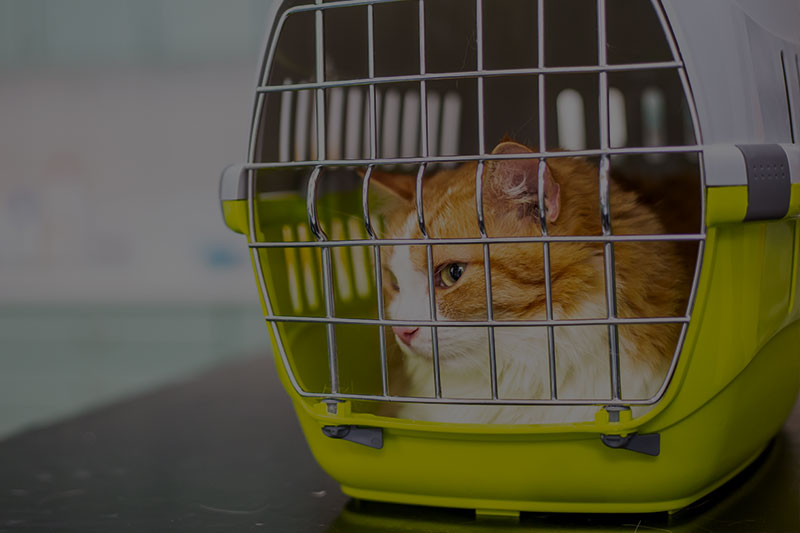
Basket and litter training are two essential elements of cat ownership that can assist provide a safe and clean habitat that benefits the cat and the parent.
Basket training is the practice of teaching a cat to unwind and sleep in a certain basket or carrier. This can be accomplished by positioning the crate or carrier in an accessible spot while motivating the cat to explore and grow acquainted with it. Once the cat goes into the carrier, offering goodies and praise can help encourage positive behavior.
Litter training is the process that teaches a cat to utilize the litter box for its restroom needs. A cat parent should do this by placing the litter box in a calm and accessible spot and encouraging the cat to familiarize with it. Once the cat begins using the litter box, it is critical that you maintain it to avoid accidents or health problems.
When it comes to cat training, persistence and positive reinforcement are essential. Cats may learn new behaviors and routines with the help of rewards, praise, and patience.
Use vet-prescribed medication
Veterinarians are not in favor of cat parents administering medicines without a vet’s approval because it may adversely affect a cat’s health. For example, some cat parents in the past have assumed that the usual paracetamol can be given for pain to cats. But that a wrong assumption. Paracetamol can be toxic to cats and cause serious harm, including liver damage, breathing difficulties, and even death.
Thus, its extremely crucial to speak with a veterinarian before administering any medicine to cats. They can advise you on the best course of action and make sure that the drug and the amount in which it is given is safe for your cat.
Dr. Raibole has observed firsthand how appropriate cat care can improve a cat’s general well-being. You can keep your cat healthy and offer them a fulfilling life by applying these ten strong ideas. Remember that your veterinarian is your best friend in keeping your cat healthy and happy. So ensure you collaborate with them to do the best you can on this cat care journey.
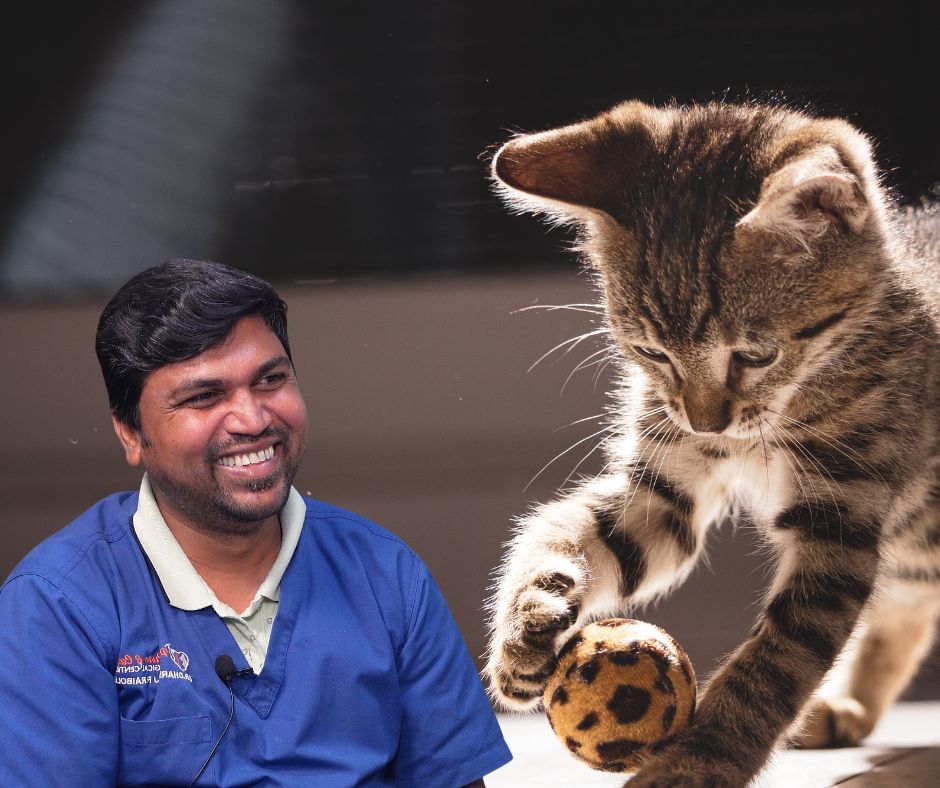
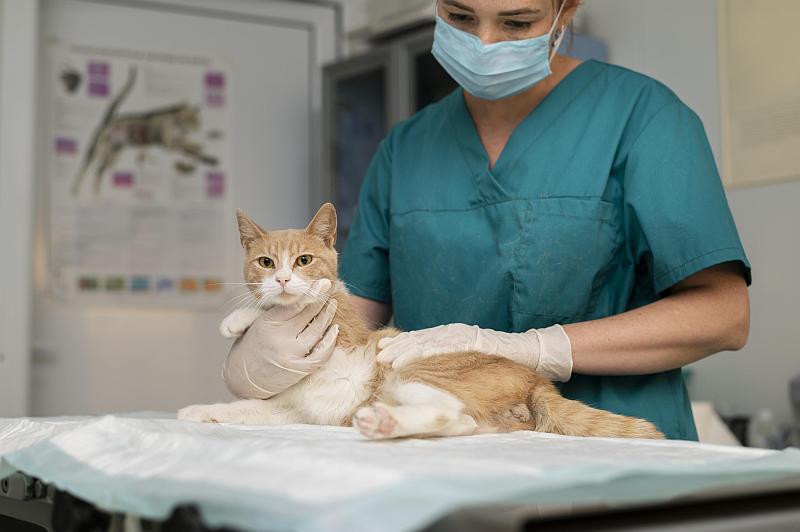
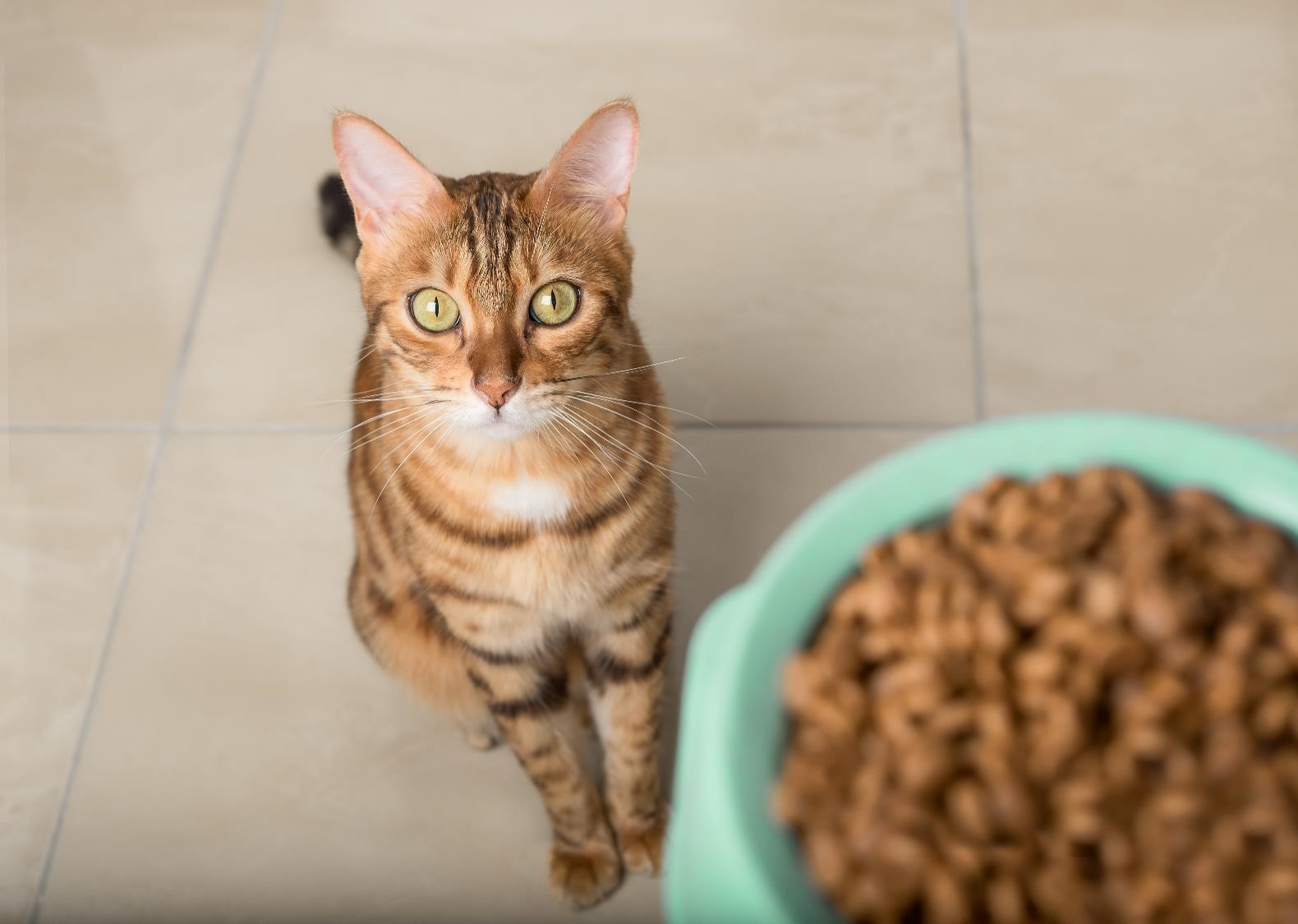


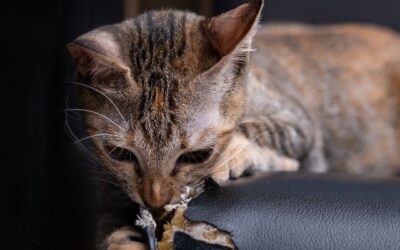

0 Comments